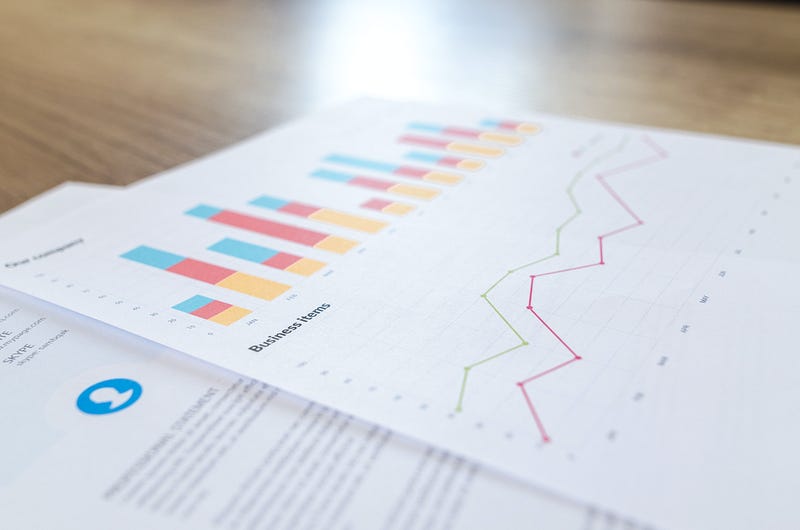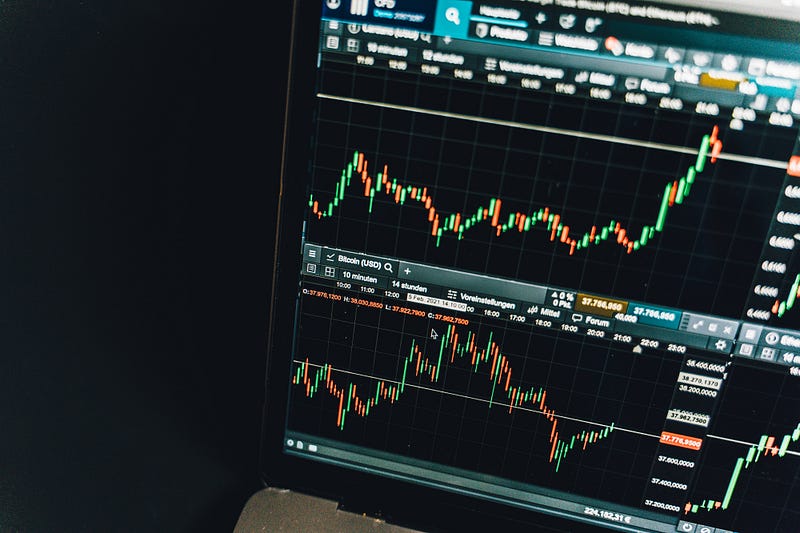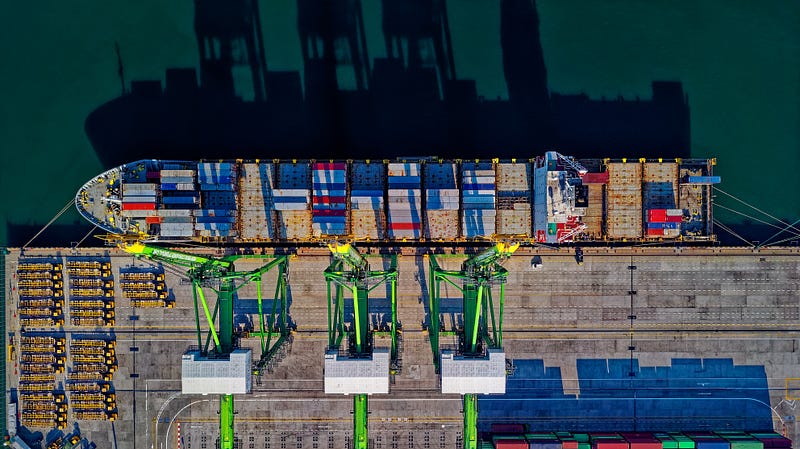Blog
Read my writing about Business, Insolvency, Turnaround, and the Economy.
The ATO has Changed the Rules on DPNs
It looks like the ATO has changed the steps that a Director can take to avoid personal liability when they receive a Non-Lockdown Director Penalty Notice (DPN). Specifically, they have removed the option to enter into a payment arrangement and added appointing a small business restructuring practitioner.

It looks like the ATO has changed the steps that a Director can take to avoid personal liability when they receive a Non-Lockdown Director Penalty Notice (DPN). Specifically, they have removed the option to enter into a payment arrangement and added appointing a small business restructuring practitioner.
As a refresher, the ATO can issue a DPN to make a director personally liable for a penalty equal to the value of a Company’s overdue SGC, PAYG and GST.
There are two types of DPN’s:
- A Non-Lockdown DPN, which can be issued when a company has lodged its Business Activity Statements (BAS) and Instalment Activity Statements (IAS) within three months of the due date and Superannuation Guarantee Charge (SGC) statements within one month and 28 days after the end of the quarter and has not paid the debt.
- A Lockdown DPN, which can be issued where a company has not lodged their BAS, IAS, or SGC statements within the above timeframes and has not paid the debt.
The only option available to a Director who receives a Lockdown DPN is to pay the penalty, or seek relief under one of the statutory defences.
For a Non-Lockdown DPN, pre-COVID the ATO offered Directors the following options to avoid personal liability:
- the company’s tax liability is discharged;
- the company went into administration;
- the company went into liquidation; or
- the company entered into a payment arrangement
However, the ATO appears to have changed the options with recently issued DPNs. Going Directors the following options to avoid personal liability:
- the company complies with its obligation to pay the unpaid amount to the ATO;
- the company goes into administration;
- the company appoints a small business restructuring practitioner (SBRP);
- the company goes into liquidation.
This change appears to be a result of the decision in Clifton (Liquidator) v Kerry J Investment Pty Ltd trading as Clenergy [2020] FCAFC 5, that entering into a payment arrangement does not cause a tax debt which is due and payable to cease to be due and payable.
This change is a good one and will see more taxation debts dealt with at the time a DPN is issued. Too often entering into a payment arrangement is simply kicking the can down the road as it does not deal with the Company’s tax debt, just delays enforcement for period until the Company falls behind again and a new DPN is issued.
By pushing Directors to make a final decision, to either formally restructure their debts though SBR or Administration, or appoint a Liquidator, we will hopefully see less zombie corporations continuing to trade.
US Bans Russian Fossil Fuel Imports
From Bloomberg this morning:
“the U.S. will ban imports of Russian fossil fuels including oil, a major escalation of Western efforts to hobble Russia’s economy that will further strain global crude markets.”
This will make things interesting.
US Bans Russian Fossil Fuel Imports

From Bloomberg this morning:
“the U.S. will ban imports of Russian fossil fuels including oil, a major escalation of Western efforts to hobble Russia’s economy that will further strain global crude markets.”
The UK has joined the US in part, with a ban on Russian Oil, but will continue to import Russian Gas and Coal. The EU have elected not to participate, hardly surprising given their significant reliance on Russian fossil fuels.
The ban is more symbolic than practical. The US only gets about 3% of its oil from Russian sources, so the ban won’t have a big impact on either side of the Atlantic. A fact reflected in the muted response to the announcement seen in oil prices today, which are still trading in the $125 to $130 range.
A EU ban would be much more impactful on Russia, but much harder for the EU to implement, given its significant reliance on Russian fossil fuels. The EU gets 27% of its oil from Russia and roughly 40% of its gas. There aren’t ready alternatives to the Russian supplies either, making immediate sanctions an expensive option for the EU. However, given time, there are options for the EU to wean itself off Russian energy imports and I expect the EU will accelerate this process over the next couple of years.
https://www.bloomberg.com/news/articles/2022-03-08/biden-says-u-s-will-ban-russian-fuels-to-pressure-putin-on-war?srnd=premium-asia
The RBA continues to be too cautious.
The RBA kept interest rates at record low levels again today, once gain refusing to increase rates from 0.1%.
The RBA once again declared they would be patient, waiting to see how things play out rather than moving early on interest rates.

The RBA kept interest rates at record low levels again today, once gain refusing to increase rates from 0.1%.
The RBA once again declared they would be patient, waiting to see how things play out rather than moving early on interest rates.
This approach is a mistake and the RBA should be moving more aggressively, raising rates now and keeping a lid on inflation before it has the opportunity to get out of control. By raising early, the RBA can keep the high point in rates at a lower level than if they wait too long, and inflation gets out of control. By waiting, the RBA runs the very real risk they will have to raise rates higher and much more aggressively to bring inflation back under control. This will be far more damaging to the economy than a steady program of early rate rises to keep inflation under control.
The RBA appears to still believe that supply chain challenges are a major contributor to inflation. However, they have talked little about the unprecedented amount of stimulus spending over the last 2 years and the obvious effect this will continue to have on prices. More money competing for largely the same mix of goods and services will always be a driver of inflation. As confidence returns to the economy with the end of COVID, this stimulus, which has largely been saved through the pandemic period, will flow back into the economy and cause inflation, irrespective of external factors.
For Struggling Businesses Now is the Time to Seek Safe Harbour
The current surge in COVID-19 cases is causing havoc for businesses. Consumers are staying home and not spending, workers are being forced to isolate leaving businesses without enough staff, and supply chains have ground to a halt, so businesses can’t get the products they need to trade.

The current surge in COVID-19 cases is causing havoc for businesses. Consumers are staying home and not spending, workers are being forced to isolate leaving businesses without enough staff, and supply chains have ground to a halt, so businesses can’t get the products they need to trade.
This confluence of events is hurting business revenue at a time when many businesses already had unhealthy balance sheets as a result of trading through lockdowns, putting Directors at risk of insolvent trading. Which exposes Directors to a significant risk of being made personally responsible for the debts of their business if it later fails.
However, there is an easy and cost-effective way that Directors can mitigate this risk, by taking advantage of the corporate safe harbour.
What is Insolvent Trading?
Insolvent trading occurs when a director allows their company to incur debts while the company is insolvent. If the company later fails, a liquidator can make a claim against the director for those debts, making them personally liable to pay back any amount still owing to those creditors.
A company is insolvent if it can’t pay its debts when they are due. This includes paying its tax and paying superannuation to employees. If a company needs to defer payments to the tax office, landlord, employees, or suppliers as a result of the current trading conditions, it may be trading while insolvent.
What’s the Risk
As noted above, if a director allows their company to trade while insolvent and the company later fails, the director may be help personally liable for the debts of the company. Practically, that means a liquidator will make a demand against the director for payment. If they fail to pay the claim, the Liquidator may bankrupt the director.
What’s the Safe Harbour?
The safe harbour regime exists to provide directors with protection from a potential insolvent trading claim while they implement a plan to turn their business around.
If the director follows the safe harbour process, including getting advice from a qualified professional, the director is protected from the personal liability for insolvent trading.
How do Directors access the Safe Harbour?
To access the safe harbour, a director needs to engage a qualified turnaround professional (like me) to work with them through the process.
When appointed to assist with accessing the safe harbour, I:
- Help the Director review the financial position of the company.
- Work with the Director to develop and implement a plan to turn the company around
- Once the plan is finalised, assist with monitoring the plan to ensure that the company stays in compliance and remains in the safe harbour.
If your business, or a clients, is struggling with the current difficult trading environment, reach out for a no obligation chat about whether the safe harbour might be available. A quick call now could save a lot of trouble and expense in the future.
It’s Rough for Business Right Now
It probably comes as a surprise to no-one, but the current Omicron outbreak is having a significant dampening effect on the economy, making what was already a tough time for small businesses that much harder.
Economic forecasts for the month of January are sharply down on pre-omicron projections, with economic growth for the March quarter expected to be around 1% to 1.5%, down from the 2% to 2.5% forecast pre-Omicron.

It probably comes as a surprise to no-one, but the current Omicron outbreak is having a significant dampening effect on the economy, making what was already a tough time for small businesses that much harder.
Economic forecasts for the month of January are sharply down on pre-omicron projections, with economic growth for the March quarter expected to be around 1% to 1.5%, down from the 2% to 2.5% forecast pre-Omicron.
Businesses are struggling to find staff to keep their doors open as workers are forced into isolate or can’t work due to illness. Goldman Sachs estimates that between 24 and 76 million hours of work could be lost in January alone.
Consumers have also pulled back, staying home rather than getting out and spending. While many are forced into seven day isolation due to a positive test or close contact, we are also seeing people self-regulate and adjust their behaviour in light of the increased risk of catching COVID-19. Data from ANZ shows that national spending for the week ended 5 January was at its lowest level of the entire pandemic in Sydney. While other stated saw the lowest level of sending since their lockdowns ended.
The drop in spending is reflected in consumer confidence which has taken a hit during the first week of January, falling 2.4 points, while only 14% of Australians expect ‘good times’ for the Australian economy over the next 12 months.
I expect these tough conditions will be with us for a further six to eight weeks. In NSW, which is ahead of the other states, we are still a couple of weeks away from peak infections. Once we are past the peak, it will take a few weeks for case numbers and hospitalisations to fall and then a few more before consumer confidence and spending start to bounce back.
All of this adds update a really difficult time for businesses, who can’t find staff to keep their businesses open, and then can’t find customers willing to get out and spend even when they are open. This new challenge comes at a time when business were already dealing with the economic hangover of trading through lockdowns and the withdrawal of government support.
For businesses facing difficulty now is the time to reach out to your trusted advisors and put a plan in place to preserve the business through the next couple of months.
Looking back at 2021
As we start 2022, it’s a great time to look back at the major events that shaped the insolvency market in 2021. It was an eventful year with new appointment types, continues depressed appointment numbers, and several major court decisions.

As we start 2022, it’s a great time to look back at the major events that shaped the insolvency market in 2021. It was an eventful year with new appointment types, continues depressed appointment numbers, and several major court decisions.
Small Business Restructuring and Simplified Liquidation
On 1 January 2021 two new appointment types were introduced, Small Business Restructuring and Simplified Liquidations. Both new reforms were rushed in response to an expected surge in business failures as a result of the pandemic. While a welcome reform, both new appointment types have seen little demand. In particular, the headline reform introducing a debtor in possession insolvency option for small business have had almost no traction. There were only 33 Small Business Restructuring appointments in 2021.
Clarity on the Peak Indebtedness rule
On 10 May 2021, the Full Court of the Federal Court of Australia declared in Badenoch Integrated Logging Pty Ltd v Bryant, in the matter of Gunns Limited (In liq) (receivers and managers appointed) that the ‘peak indebtedness rule’ which has been a long-standing precedent in preference claims, was abolished with the introduction of section 588FA of the Act.
The prevailing position (first articulated in Rees v Bank of New South Wales (1964) 111 CLR 210) had been that the liquidator was entitled to nominate the date from which the ‘running account’ starts when calculating the unfair preference. Practically, this resulted in Liquidator’s choosing the date during the relation back period when the debt owed by the company to the creditor was at its highest, resulting in the largest possible unfair preference claim.
While this decision complicates the calculation of preference claims for liquidations, it does provide a more equitable approach to calculating preference claims.
Introduction of Director Identification Numbers
From 1 November 2021 company directors were able to obtain a Director Identification Number. This reform is designed to bring greater accuracy to the ASIC company register and prevent the use of fictitious director identities.
Clarity on Unfair Preferences and set-off
After several years of back and forth decisions on this issue, the Full Court of the Federal Court of Australia finally provided clarity in Morton as Liquidator of MJ Woodman Electrical Contractors Pty Limited v Metal Manufacturers Pty Limited on 16 December 2021.
The Court ruled that a creditor cannot rely on the statutory set-off under s553C(1) of the Corporations Act 2001 (Cth), to reduce the claim of a liquidator for an unfair preference under section 588FA of the Act.
Government Reviews
Through the year, the government was active with reviews into the insolvency legislative framework. First with a review of the bankruptcy system and the impacts of coronavirus, ending in February 2021.
Second was a review of the insolvent trading safe-harbour, with an independent panel appointed to report to the government on whether the safe harbour provisions remain fit for purpose and how its benefits can be extended to as many businesses as possible
Third, was a review of corporate trusts and insolvency. On 5 October 2021, Treasury opened a consultation seeking stakeholder views on whether the treatment of corporate trusts in Australia’s insolvency law needs to be clarified and input on the benefits this could deliver and how any new framework might operate.
Depressed appointment numbers
The Australian economy held up surprisingly well through the various challenges it faced during 2021. Business failures and personal bankruptcies both remained well below historical trends, with bother seeing approximately 40% less appointments than the historical average.
Given the impact of the lockdowns, other COVID-19 restrictions, and supply chain challenges, it was surprising to see both personal and corporate insolvencies stay so low. However, government support and stimulus did its job and kept business alive during the uncertainty.
When does a business need help dealing with the COVID Hangover? — Brendan Giles
As we recover from the impact of COVID-19, many small and medium businesses are facing difficulty dealing with the ‘hangover’.
Steps businesses took to survive through lockdowns, like deferring rent and taxes, seeking holidays on finance payments, maybe even delaying the payment super for employees now have to be dealt with. I call this the ‘COVID hangover’.

As we recover from the impact of COVID-19, many small and medium businesses are facing difficulty dealing with the ‘hangover’.
Steps businesses took to survive through lockdowns, like deferring rent and taxes, seeking holidays on finance payments, maybe even delaying the payment super for employees now have to be dealt with. I call this the ‘COVID hangover’.
This hangover can put a lot of pressure on businesses as we recover from the pandemic. The combined stress of the government withdrawing support, trading recovering slowly, and dealing with the ‘COVID hangover’ will be too much for some businesses.
If you are running a business, or advising clients about their businesses, the key to saving struggling businesses is to seek the right advice early. To help identify when a business might be in need of some expert turnaround or resturcktriong advice, here are some key indicators to look out for.
- Outstanding taxation debts, especially if the debts are more than 60-day overdue or the ATO has issued a payment demand or reminder.
- Non-urgent creditors not being paid on time, such as Superannuation.
- Creditors aren’t getting paid. Significant amounts of accounts payable are outside trading terms.
- Reliance on high costs forms of financing such as overdrafts or credit cards to meet business expenses.
- Customers aren’t paying. Significant amounts of accounts receivable are outside payment terms.
- The company has received a Statutory Demand or wind-up application.
- High staff turnover or unhappiness within the management team. People are jumping ship.
- Significant losses, especially if there have been continued losses over the last two years.
- The directors or shareholders are routinely injecting funds into the business to keep it afloat.
- Negative net assets on the balance sheets.
- Cash flows are insufficient to deal with day-to-day expenses and paying down debt accrued through the pandemic.
If your business, or a client’s, is showing one or more of these indicators, there are many unique opportunities that exist to restructure the business, renegotiate its debts, improve business health and cure the ‘COVID hangover’. The most important thing is to seek help early. The earlier a business gets the right advice, the more options are available, and the greater the chance the business can quickly get past the ‘COVID hangover’.
If you’re interested in the options available to restructure COVID debts, reach out for a free, no obligation chat about your business and how I can help.
Originally published at https://www.brendangiles.com on November 30, 2021.






